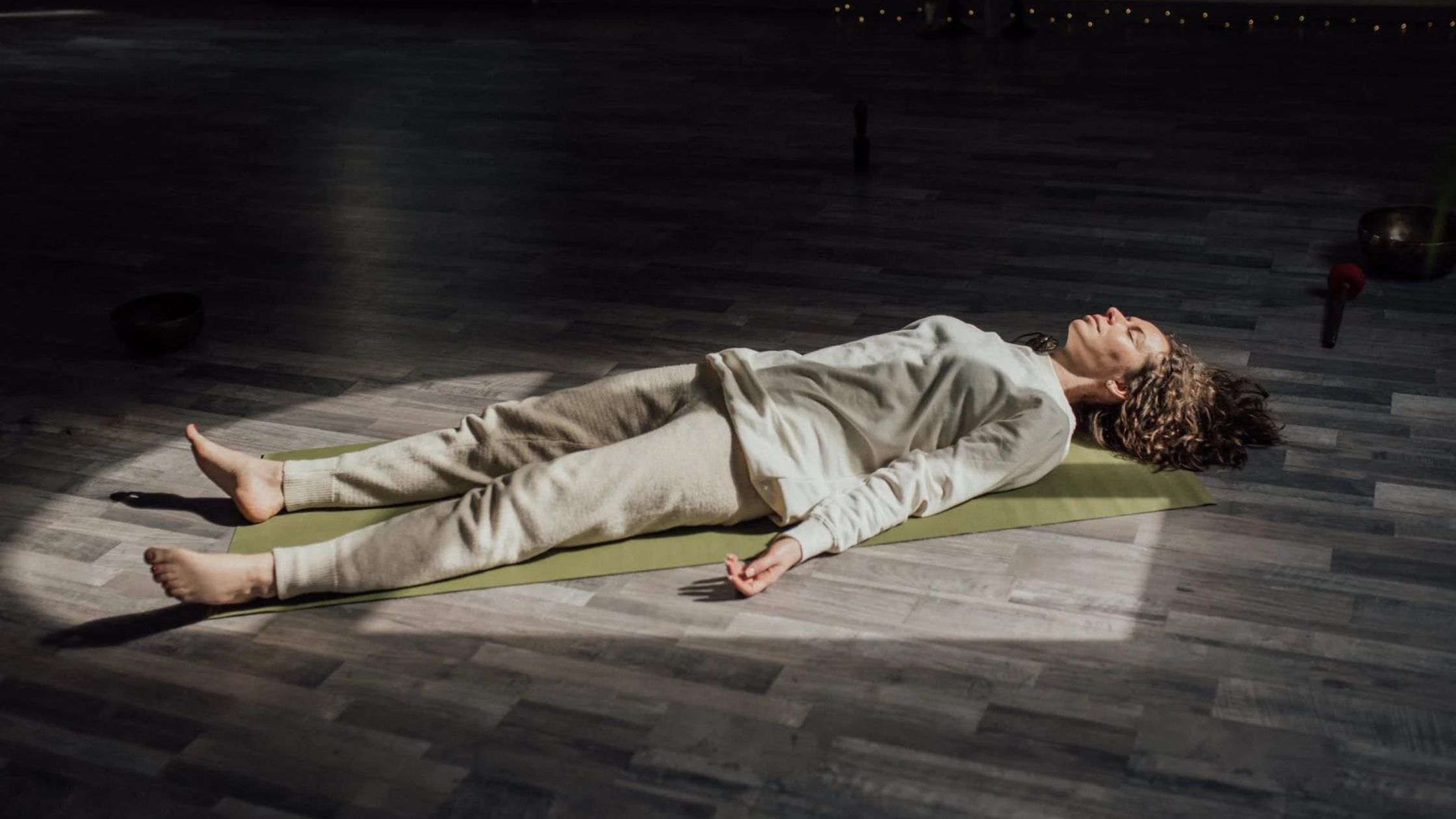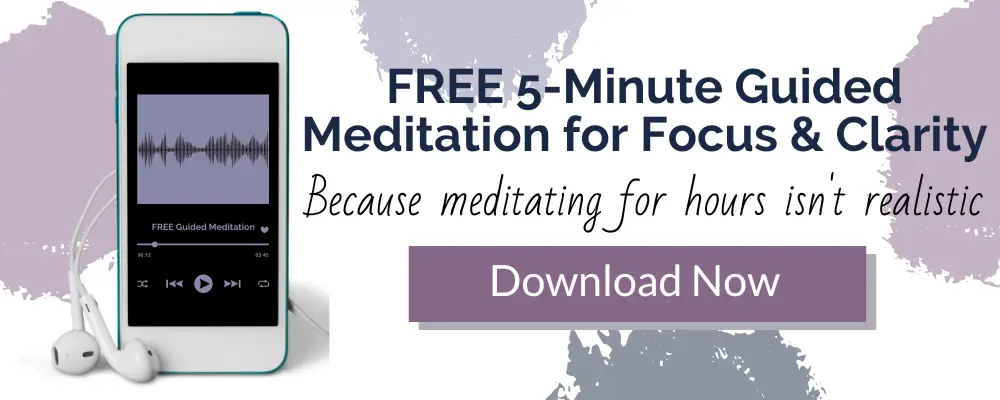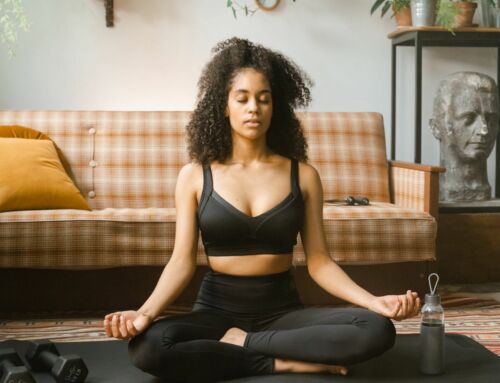Progressive Muscle Relaxation Technique: Relax & Recharge

Have you been feeling burned out and overwhelmed lately? Do you find yourself tossing and turning at night, unable to get a good night’s sleep? You’re not alone. Everybody struggles with stress and anxiety at some point in their lives. The good news is that there are relaxation techniques that can help you manage these feelings and improve your overall wellbeing. One of the most effective relaxation techniques out there is called progressive muscle relaxation technique (PMR).
“What in the world is progressive muscle relaxation technique?” It’s a technique that involves tensing and relaxing muscles in your body, from head to toe. It releases tension, reduces stress and anxiety, and allows for relaxation. It might sound a bit strange at first, but trust me, it works wonders.
Think of it this way: when you’re stressed, your body tenses up, and your muscles become tight and sore. It’s like your muscles are clenching, trying to protect you from the stress. But by practicing this technique, you’re giving your muscles permission to let go of that tension and relax. It’s like giving your muscles a massage from the inside out.
So, if you’re feeling tense and want to try something new to help you relax, give this exercise a try. It might just be the answer you’ve been looking for!
What is progressive muscle relaxation?
PMR is an easy relaxation exercise to learn and can be done pretty much anywhere, making it a convenient option for anyone looking to relieve tension and improve their overall wellness.
It involves squeezing and then relaxing the muscle groups in your body. You can combine this with deep breathing exercises or guided imagery for maximum effect.
You start at your toes and work your way up to your head, releasing all that tension along the way.
History of Progressive Muscle Relaxation Technique
PMR has been around since the early 1920s, when Dr. Edmond Jacobson invented it. Now people all over the world use this technique to feel more relaxed.
It’s been extensively studied by researchers, and studies have shown that it can help reduce anxiety, improve sleep quality, and even lower blood pressure.
The idea behind the technique is that your muscles and your brain are connected. So when your muscles are tense and tight, it can make your brain feel tense too. But when you release that muscle tension, it can help your brain relax. It’s like taking a deep breath and letting it all out.
The Science Behind Progressive Muscle Relaxation
Scientists have actually studied this technique and found that it can really help people feel less worried and anxious. It can also help people sleep better, lower their blood pressure, and even boost their immune system. That’s right, by relaxing your muscles, you’re actually making your body stronger!
So why does progressive muscle relaxation work so well? It’s because of the connection between physical tension and mental tension. It’s a type of autogenic training, which means it uses the power of the mind to relax the body and vice versa.
It all starts when you’re mentally stressed. Your muscles get very tight in response to this stress. It’s like they’re trying to protect you, but it just makes things worse. Your muscle tension then triggers your brain and makes your brain feel even more stressed. It’s a hard cycle to break.
By releasing that muscle tension, you’re giving your muscles permission to relax and chill out.
This sends a message to your brain that it’s okay to calm down too. It’s like a little reminder that everything is going to be okay. It’s like a big sigh of relief for your whole body.
Benefits of Progressive Muscle Relaxation
There are a ton of benefits to practicing PMR. It can help reduce muscle tension, improve blood circulation, reduce stress, relieve anxiety, improve sleep quality, lower blood pressure, boost immune system function, and even help manage pain conditions.
Reduces Muscle Tension
This exercise is essentially giving your muscles a mini-vacation. You’re telling them, “Hey guys, it’s okay to let go now.” And when your muscles relax, it can help relieve any tension and soreness you might be feeling. It’s like a massage for your muscles!
Improves Blood Circulation
Did you know that when your muscles are all tense and tight, it can actually affect your blood circulation? That’s because tense muscles can constrict blood vessels and make it harder for blood to flow through your body. But when you help your muscles relax, it can improve blood flow and make you feel more energized.
Reduces Stress & Anxiety
One of the biggest benefits of progressive muscle relaxation is that it can help you feel less stressed and anxious. By releasing muscle tension, you’re telling your brain that it’s okay to calm down too. And when your brain is calm, you can feel more at ease and less overwhelmed.
Improves Quality Of Sleep
If you’ve ever had trouble falling asleep because your mind was racing with thoughts, progressive muscle relaxation can help improve your quality of sleep. By practicing this technique before bed, you’re helping your body and mind relax, which will lead to a better night’s sleep. And who doesn’t love a good night’s sleep?
Lowers Blood Pressure
Studies have actually shown that practicing progressive muscle relaxation can help lower blood pressure. That’s because when your muscles are all tense and tight, it can put extra strain on your heart and blood vessels. But by relaxing those muscles, you’re helping your body work more efficiently and effectively.
Boosts Immune System Function
Did you know that stress can actually weaken your immune system? That’s why it’s so important to manage. And one way to do that is by practicing this technique. By reducing stress and anxiety, you’re helping both your physical and mental health.
Helps Manage Pain Conditions
If you suffer from chronic pain conditions, like arthritis or fibromyalgia, this might be a helpful tool in managing your pain. By releasing muscle tension, you’re helping your body feel more relaxed and comfortable, which can make your pain feel more manageable.
How to do Progressive Muscle Relaxation Technique
Okay, so now that you know all about the benefits, you might be wondering how to actually do it.
Basically, you just lie down or sit in a comfy spot and start squeezing and then relaxing each of your muscle groups. It’s like giving them a little workout, but in reverse! You start at your toes, then do your legs, tummy, arms, shoulders, and head. It’s like a muscle massage, but you’re doing it yourself!
Don’t worry, it’s super easy! Here’s a step-by-step guide to get you started.
1. Finding a Quiet and Comfortable Space
First, find a quiet and comfortable space where you won’t be interrupted. You can do this technique lying down or sitting up, whatever feels best for you. Just make sure you’re in a relaxed and comfortable position.
2. Start with Deep Breathing
Close your eyes and start by taking a few deep breaths. Allow yourself to let go and relax.
This technique can be combined with other forms of mindfulness like visualization or guided imagery to help you start to relax. Take a few deep breaths and imagine yourself in a peaceful place, like a beach or a forest. Stay in this relaxed state for a few minutes.
3. Squeeze and Relax Your Feet
Start with your feet. Squeeze your toes and feet as tight as you can for a few seconds, then release and feel the tension leave your muscles. Take a deep breath in as you squeeze, and breathe out as you release.
4. Move To Your Caves
Move up to your calves and repeat the same process of squeezing and releasing.
When you squeeze your muscles make sure you are focusing on the specific muscle group only tensing those muscles, and that you are squeezing with enough force to feel tension.
5. Move Up To Your Thighs
Make sure your breathing is rhythmic and relaxed. Move up to your thighs and repeat the same process of squeezing and releasing. Your squeezing should feel intentionally, but never painful.
6. Move Up To Your Tummy
Move up to your tummy and repeat the same process of squeezing and releasing. As you release tension make sure you let yourself fully relax releasing all tension.
7. Move To Your Chest and Arms
Take your time as you move through each muscle group. Make sure you are checking in with your body and noticing how each area feels. Are there areas where you are holding more tension or discomfort?
Move up to your chest and arms, and repeat the same process of squeezing and releasing.
8. Finish With Your Shoulders, Neck & Face
Finally, move up to your shoulders, neck and face, and repeat the same process of squeezing and releasing all tension making sure you release your muscles fully. Think of them as feeling like jelly as you release.
9. Open Your Eyes When You’re Ready
As you finish up your meditation don’t feel rushed. You can complete a second round if you’d like.
Take a few rounds of deep breaths and slowly bring your awareness back to your surroundings. Slowly blink your eyes open when you’re ready.
Tips for Beginners
Don’t worry if you’re not able to fully relax all your muscles at first. It takes practice, so be patient with yourself.
If you have trouble focusing, try counting to 10 as you squeeze your muscles, then release them. This can help you stay focused and centered.
Try practicing this technique for at least 10 minutes a day to start seeing the benefits.
Try it For Yourself
PMR is a powerful tool that can help you feel more relaxed. This technique has a ton of benefits, like reducing muscle tension, improving blood circulation, and reducing stress and anxiety.
By releasing muscle tension, you’re sending a signal to your brain that it’s okay to calm down too. And when your brain is calm, you can feel more peaceful and at ease.
It’s a simple and effective technique that can be done anywhere, anytime. So whether you’re feeling stressed out at work, anxious before a big presentation, or just need a little moment of peace in your day, give this exercise a try!
Remember, it’s all about taking care of yourself and finding ways to manage and relieve stress and anxiety. And with this technique, you can do just that. So go ahead and give it a try, and let me know how it works for you! For information on other types of meditation like walking meditation or body scan meditation check out my article, Unlock Calm With 10 Mindfulness Meditation Exercises.













